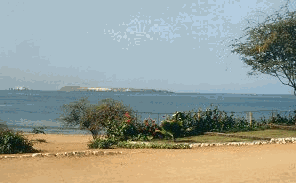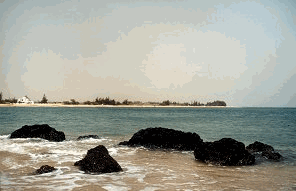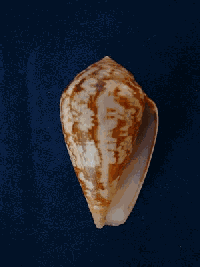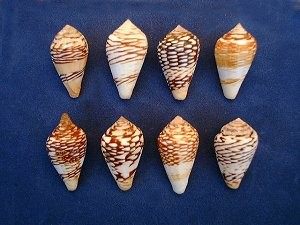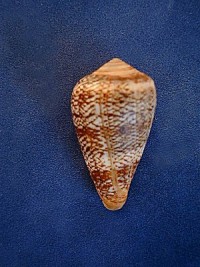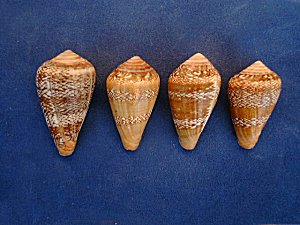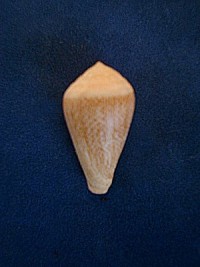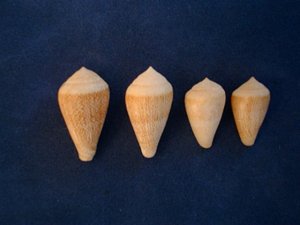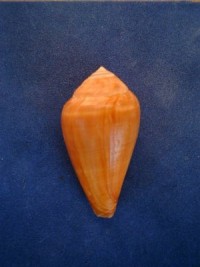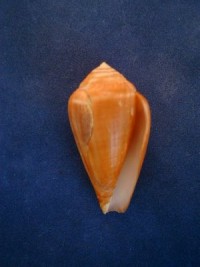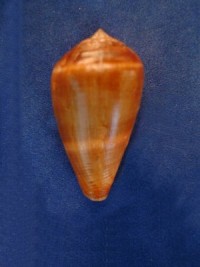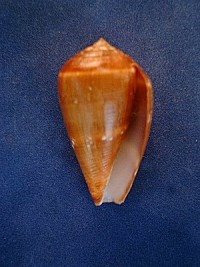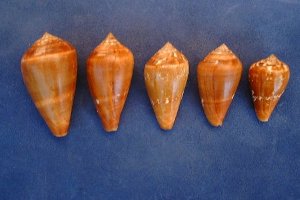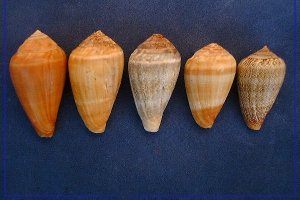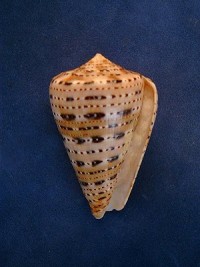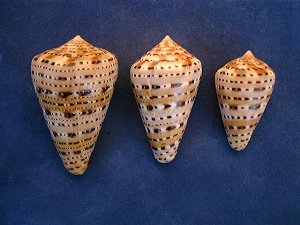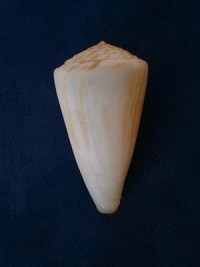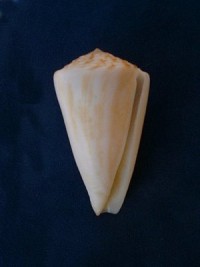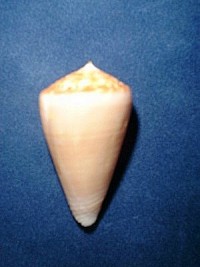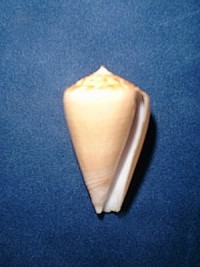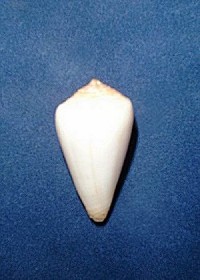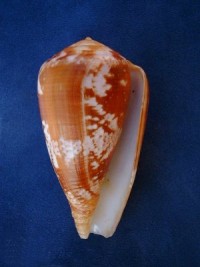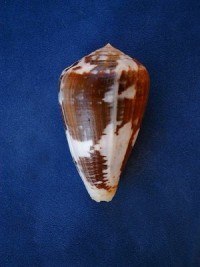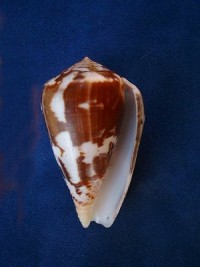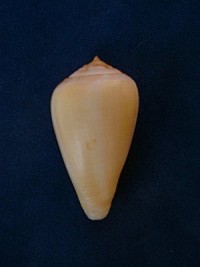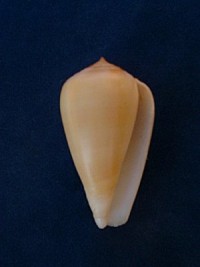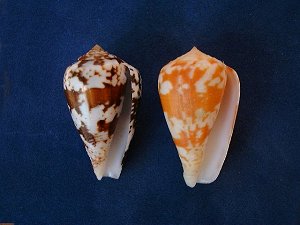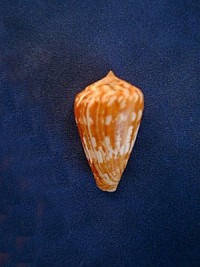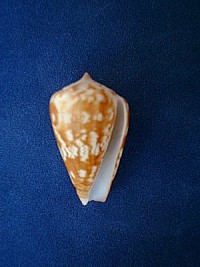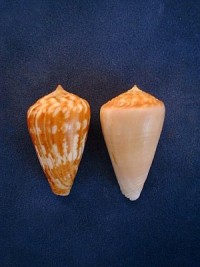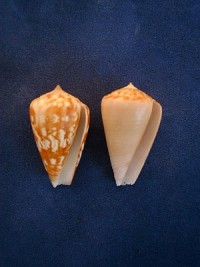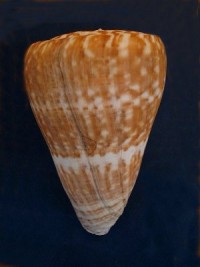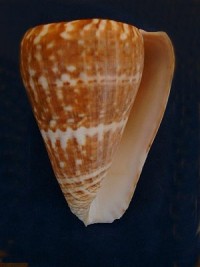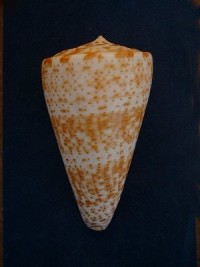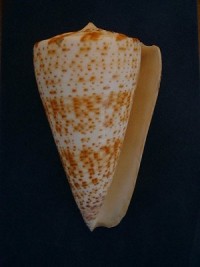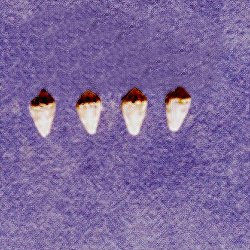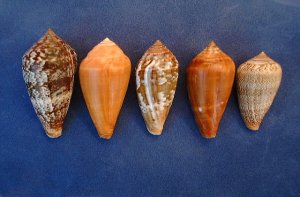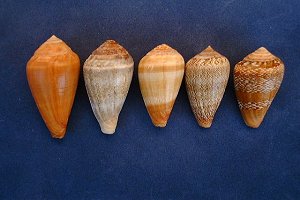Senegal Cone Shells
Author : Le Béon Roger, 2001
A. The Environment
B. The Landscapes
C. The Cone shells
D. ICONOGRAPHY & DISCUSSION
E. Comments
|
|
This article shows cones I have founded during a two years stay in Senegal (1990-1992). It is a tentative to illustrate as accurately as possible these species and to show the associate biota’s. For identification it use the help of the " Les cônes du Sénégal " publication by Marcel PIN and K.D. LEUNG TACK, publicised as a supplement of La Conchiglia n° 277, in 1995.
This document is the latest about this subject and even if the identification process of identification used is not widely accepted, mainly by the scientific old, it is still the most interesting publication concerning Senegal’s cones.. The other popular existing publication about cones shells, the " Cone shells " of Walls, is quite erroneous concerning the Senegal’s cones, as Marcel PIN says. |

|

|

|
| A. The Environment | |
|
Atlantic ocean waters of Senegal not allows an easy seashells collect by free diving as I have done as well as beach comber fishing during low tide. The sea , warm during summer is quite cold during winter. The visibility is usually poor on the sea side, and very often, the sea state is very hard with big waves due to the strong south west Alize wind, during a long period of the year. Only the rocky area of the Cap Vert peninsula allows such kind of collect during some quiet periods. These areas are mainly situated at the north and west of Dakar city. They are : The Yoff area, north of the peninsula with numerous rocks that's appears at low tide. The N’Gor area, where close to rocks piles, is a little sandy beach protected by the N’Gor island. The Almadies cape with rocks piles and two little beaches . The Ouakam area with high cliffs at the base of the higher Senegal’s hill " less Mamelles ", where some wide natural pools remains at low tide. The Fann area between Ouakam and Soumbedioun villages severely polluted an hardly beat by the waves. All long the corniche where are numerous little sandy bays with rocks piles and natural pools . This area is also quite polluted despite some hotels have their private beach here. Goree island situated close off the Dakar port. Here is a little beach surrounded by rocky areas and some high cliff. It is probably the best spot for shelling but the pollution is coming and some times the visibility is very poor. The Bel Air cape is edged by two beaches , the public " voile d’or " is a popular beach but totally sterilised, and the private military beach with a long pier and some rocky places. In all this area I never find any shell except beach ones. Southerly starts a large area which lays from the Hann bay to the Sine Saloum river mouth and then the very far Casamance province. On this " petite côte " some little villages like Popomguine, N’Gaparu, M’Bour and Joal Fadiouth allows to reach the sea side. Totally polluted between Hann and the cap des Biches this area only allows shelling at low tide and exceptionally by snorkelling with a very low visibility reduced to less than 20 centimetres Southerly the area is very rich (marginellas, helmets, volutes, murex, cones and even cypreae…), but the only means to catch them is by using trawlers or diving off shore on the rocky banks. Fishermen find very often interesting species that you can buy. |
|

|
|
|
Goree island one of the best diving spot of Senegal.
Just here bellow, is the Tacoma wreck ( between 15 and 20 meters) where is a very popular diving place used by the Dakar diving club. |
|
| B. The Landscapes | ||||||||||||
|
| C. The Cone shells | |||||||||||||||||||||||||||||||||||||||||||||||||||||||||||||||||||||||||||||||||||||||||||||||||||||||
|
In his study M. Pin described eighteen species of Senegal’s cones. I only found thirteen of them. That are absent of my inventory are : C. brugieresi (Kiener, 1945) C. belairensis (Pin-Leung Tack, 1989) C. mediterraneus (Hwass in Bruguière, 1792) That do not, naturally, means that they do not exist. My investigations were probably outside their normal biotops. I’ve never investigated the Yoff area that is the normal breading zone of C. bruguieresis and C. mediterraneus as M. Pin says. On the other hand the Bel Air area becomes a real malacological desert. The only cone I found there was a big C. pulcher. The C.belairensis is disappeared . The species I discovered are :
|
| D. ICONOGRAPHY & DISCUSSION | |||||||||||||||||||||||||||||||||||||||||||||||||||||||||||||||||||||||||||||||||||||||||||||||||||
|
| E. COMMENTS |
|
These comments are strictly personal . They only give my feeling without any scientific evidence since I do not have this competence. This will only show how difficult the Senegal’s cones identification is. These shells need to be more accurately studied C. mediterraneus : I had the opportunity to see some specimens of this cone from the Alexandria area (Egypt), which resemble closely to the C. hybridus illustrated here. In an other hand the C. mediterraneus illustrated in the Pin’s study do not give any distinctive clues to make the difference with C. hybridus . C. unifasciatus : like I explained before, numerous common characteristics exist with C.hybridus : general shape, size, two white stripes… C. cacao : if you can easily distinguish this species from C. mercator, you can also find numerous common clues with C. hybridus : size, general shape,but a little broader, and presence of two white bands… Considering that these cones are not living in the same places together, and that they are spread from north to south of the peninsula as follows : C. hybridus, C. unifasciatus, C. cacao, we are allowed to ask the question if it is not the same cone (why not C. mediterraneus ?), with some variations due to the different biotops ? |
I hope this article will contribute a little to enhance the Senegal’s cones knowledge. I am waiting for your comments. Send me a mail. contact : Rlebeon@wanadoo.fr |


